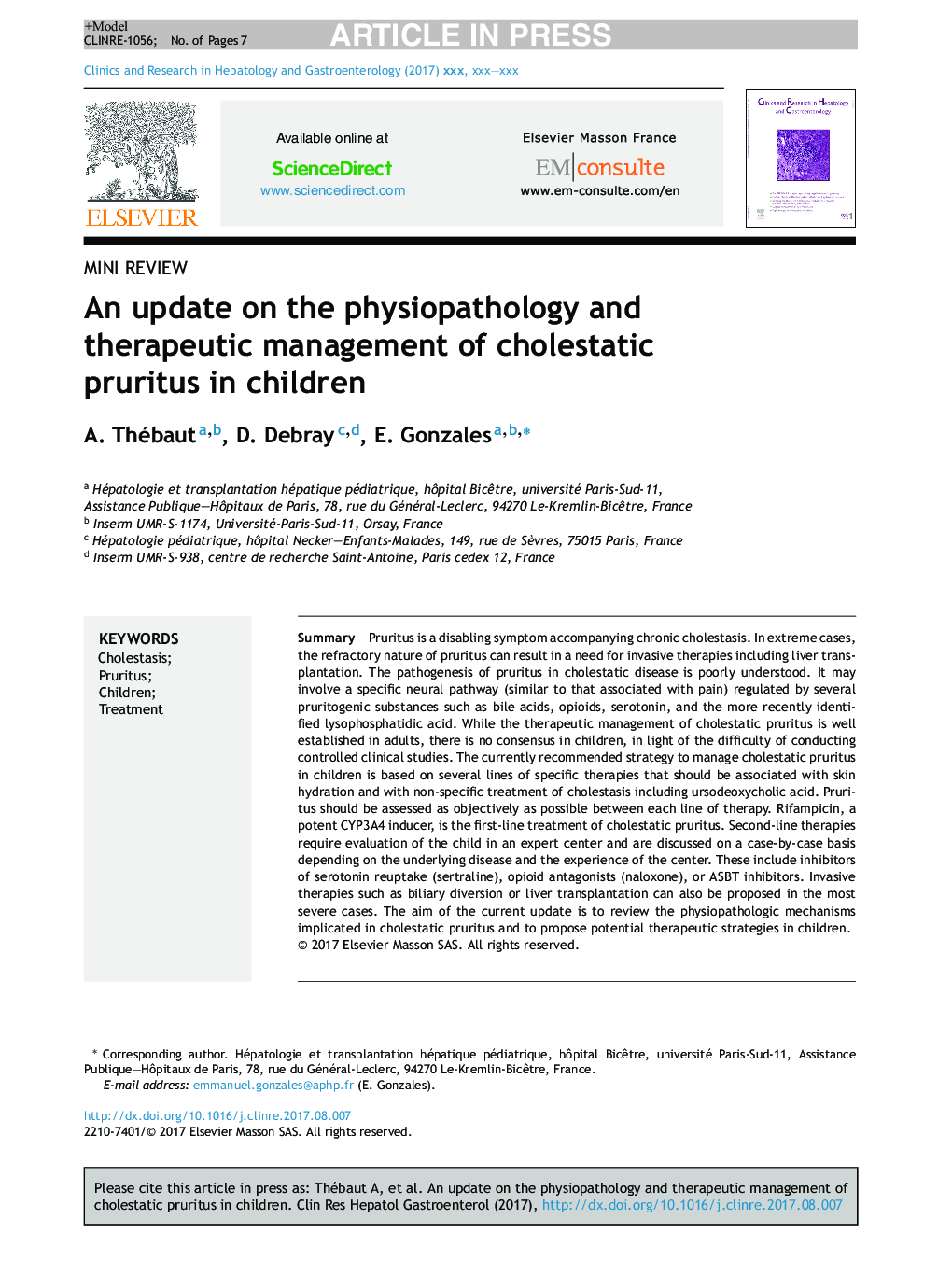| Article ID | Journal | Published Year | Pages | File Type |
|---|---|---|---|---|
| 8725433 | Clinics and Research in Hepatology and Gastroenterology | 2018 | 7 Pages |
Abstract
Pruritus is a disabling symptom accompanying chronic cholestasis. In extreme cases, the refractory nature of pruritus can result in a need for invasive therapies including liver transplantation. The pathogenesis of pruritus in cholestatic disease is poorly understood. It may involve a specific neural pathway (similar to that associated with pain) regulated by several pruritogenic substances such as bile acids, opioids, serotonin, and the more recently identified lysophosphatidic acid. While the therapeutic management of cholestatic pruritus is well established in adults, there is no consensus in children, in light of the difficulty of conducting controlled clinical studies. The currently recommended strategy to manage cholestatic pruritus in children is based on several lines of specific therapies that should be associated with skin hydration and with non-specific treatment of cholestasis including ursodeoxycholic acid. Pruritus should be assessed as objectively as possible between each line of therapy. Rifampicin, a potent CYP3A4 inducer, is the first-line treatment of cholestatic pruritus. Second-line therapies require evaluation of the child in an expert center and are discussed on a case-by-case basis depending on the underlying disease and the experience of the center. These include inhibitors of serotonin reuptake (sertraline), opioid antagonists (naloxone), or ASBT inhibitors. Invasive therapies such as biliary diversion or liver transplantation can also be proposed in the most severe cases. The aim of the current update is to review the physiopathologic mechanisms implicated in cholestatic pruritus and to propose potential therapeutic strategies in children.
Keywords
Related Topics
Health Sciences
Medicine and Dentistry
Gastroenterology
Authors
A. Thébaut, D. Debray, E. Gonzales,
